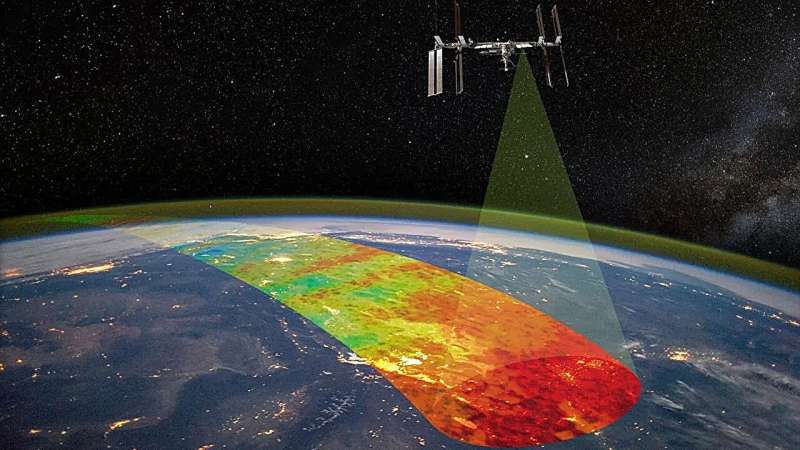This article has been reviewed according to Science X's editorial process and policies. Editors have highlighted the following attributes while ensuring the content's credibility:
fact-checked
trusted source
proofread
Atmospheric Waves Experiment launching to space station to study atmospheric waves via airglow

NASA's Atmospheric Waves Experiment, or AWE, mission is scheduled to launch to the International Space Station in November 2023, where it will make use of a natural, ethereal glow in Earth's sky to study waves in our planet's atmosphere.
Built by Utah State University's Space Dynamics Laboratory in North Logan, Utah, AWE will be mounted on the exterior of the space station. From this perch, AWE will stare down toward Earth, tracking undulations in the air known as atmospheric gravity waves (AGWs).
Primarily originating in the lowest level of the atmosphere, AGWs may be caused by strong weather events such as tornadoes, hurricanes, or even thunderstorms. These weather events can momentarily push pockets of high-density air upwards into the atmosphere before the air sinks back down. This up-and-down bobbing often leaves behind distinctive ripples patterns in the clouds.
But AGWs continue all the way to space, where they contribute to what's known as space weather—the tumultuous exchange of energy in the area surrounding our planet that can disrupt satellite and communications signals. AWE will measure AGWs at an atmospheric layer that begins some 54 miles (87 kilometers) in altitude, known as the mesopause.
"This is the first time that AGWs, especially the small-scale ones, will be measured globally at the mesopause, the gateway to the space," said Michael Taylor, professor of physics at Utah State University and principal investigator for the mission. "More importantly, this is the first time we will be able to quantify the impacts of AGWs on space weather."
At the mesopause, where AWE will make its measurements, AGWs are revealed by colorful bands of light in our atmosphere known as airglow. AWE will "see" these waves by recording variations of airglow in infrared light, a wavelength range too long for human eyes to see. At these altitudes our atmosphere dips to its coldest temperatures—reaching as low as -150° Fahrenheit (-101° Celsius)—and the faint glow of infrared light is at its brightest.
By watching that infrared airglow grow brighter and dimmer as waves move through it, AWE will enable scientists to compute the size, power, and dispersion of AGWs like never before. It was also designed to see smaller AGWs, detecting short-scale ripples in airglow that previous missions would miss.
"AWE will be able to resolve waves at finer horizontal scales than what satellites can usually see at those altitudes, which is part of what makes the mission unique," said Ruth Lieberman, AWE mission scientist at NASA's Goddard Space Flight Center in Greenbelt, Maryland.
From its vantage point on the space station, AWE's Advanced Mesospheric Temperature Mapper (AMTM) instrument will scan the mesopause below it. AWE's AMTM consists of four identical telescopes, which together comprise a wide-field-of-view imaging radiometer, an instrument that measures the brightness of light at specific wavelength ranges.
The relative brightness of different wavelengths can be used to create temperature maps, which in turn reveal how AGWs are moving through the atmosphere. It will be the most thorough study of AGWs and their effects on the upper atmosphere ever conducted.
As a payload headed to the space station, AWE was required to hold four crucial safety reviews. The mission was successfully certified as a station payload at its last review in July 2023. Part of this certification involved "sharp edge" testing with astronaut gloves to ensure safety during AWE's installation and maintenance on the exterior of the space station.
AWE is the first NASA mission to attempt this type of science to provide insight into how terrestrial and space weather interactions may affect satellite communications and tracking in orbit.
Following AWE's installation on the International Space Station, the team's focus will be to share the instrument's data and results with the science community and the public.
More information: More information about AWE is available on the mission website: https://www.awemission.org/.
Provided by NASA's Goddard Space Flight Center





















